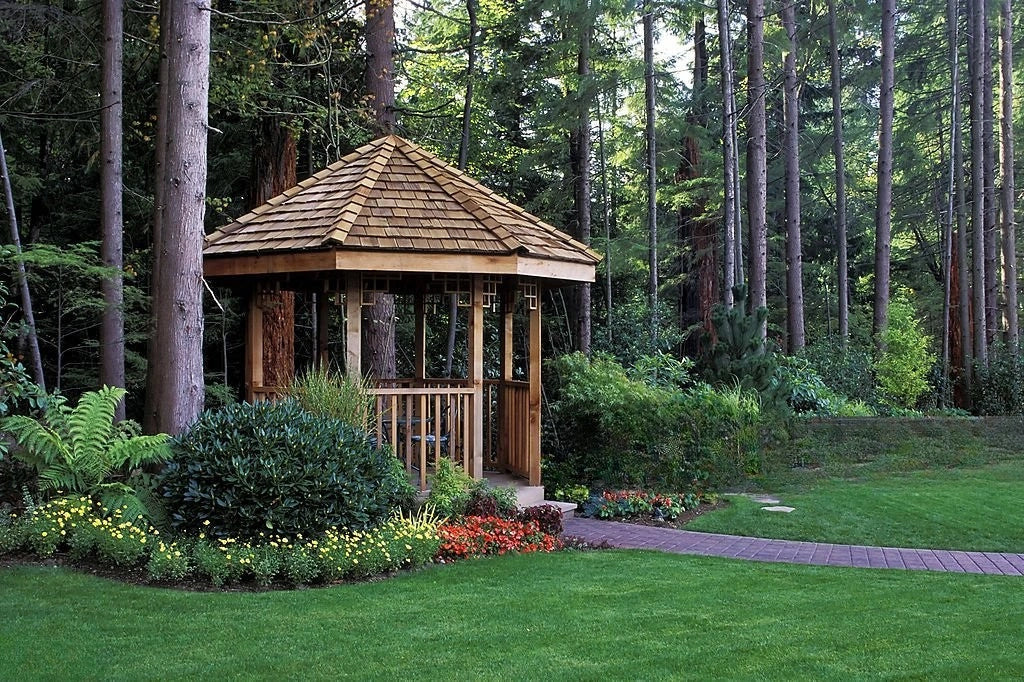Living by the river is a dream for many, but the extra moisture, wind and flood risk mean your windows do far more than frame a pretty view. The right glazing helps keep condensation, draughts and noise under control while making your home more energy-efficient. From high-performance double glazing and moisture-resistant uPVC or composite frames to clever styles like tilt-and-turn, casement or awning windows, small design choices can make a big difference to comfort and heating bills in a riverside home. Even large sliding or fixed picture windows can be part of a low-impact home when paired with quality seals and thermally efficient glass. On Friendly Turtle EcoBlog, we love exploring these practical, planet-friendly upgrades the kind that protect your home, tread more lightly on local waterways and still let you enjoy those calming river views day after day.
Share your articles with us and get published! Reach out at hello@friendlyturtle.com.
6 Sustainable Tips for Setting Up a Gazebo in Your Garden

Adding a gazebo to your garden is a smart way to enjoy the outdoors without worrying about the elements. Whether you want a quiet retreat or somewhere to entertain, a well-placed and properly installed gazebo can make a real difference.
But getting it right takes a little thought and planning. From location and structure to safety and comfort, every step matters if you want it to stand the test of time. Keep reading to learn what to consider when setting up your gazebo.
1. Start with the Right Spot
The first thing to do is pick a location that works with the way you already use your garden. Look for a flat and stable area that is clear of overhanging branches or obstacles. Think about how the sun moves through your garden during the day. If you want a shaded spot, choose a position that blocks direct sunlight in the afternoon.
You’ll also want to make sure there’s enough clearance around the gazebo for airflow and access. A cramped or awkwardly placed structure won’t be practical and may feel more like an obstacle than a feature.
2. Check the Surface and Foundation
Before you start assembling anything, inspect the ground where your gazebo will go. A firm, even base is essential. If the soil is soft or loose, the frame might shift over time. In that case, you may want to consider using paving slabs, concrete pads, or even decking as a stable base.
TFH Gazebos offers a range of durable options that suit both hard and soft ground, so you can match the model to your garden setup without compromising stability.
3. Go for the Right Frame and Canopy
Choosing the right material makes a big difference to how your gazebo performs in all weather. Aluminium frames are lightweight yet strong, making them a good choice for quick setups. Steel frames, while heavier, tend to offer greater resistance to wind.
Look for a waterproof and fire-rated canopy to get the most use from your gazebo. If you’re planning to leave it up for extended periods, consider reinforced seams and UV protection to prevent fading or wear.
4.Think About Anchoring and Safety
Gazebos need to be properly anchored to stay secure, especially in breezy conditions. Pegs, weights, or guy ropes may be used depending on the model and surface.
Even for short-term use, skipping this step is risky. A strong gust can do more than knock over your setup, it can damage nearby property or cause injury. Always follow the manufacturer’s advice and double-check fixings before use.
5.Add Comfort with the Right Accessories
Once the structure is up, it's worth thinking about how to make the space more inviting. Side panels can offer extra shade or privacy, while flooring helps keep things tidy underfoot. For evening use, solar lights or battery-operated lanterns are simple additions that create a cosy atmosphere.
6. A Garden Feature That Works Hard
Setting up a gazebo is more than just popping up a tent. It’s about making a space you’ll actually use. With the right preparation and upkeep, your gazebo can become a go-to spot for lazy afternoons, family gatherings, or even a quiet cuppa on a drizzly day. Take the time to plan properly now, and you’ll enjoy the benefits for seasons to come.
0 comments
Let customers speak for us
Blog posts
Making your own ice might seem like a tiny habit, but it can quietly cut waste and carbon in a big way. When you freeze water at home in reusable trays or an efficient freezer, you skip the single-use plastic bags, transport emissions and constant industrial refrigeration that come with store-bought ice. You also control the quality of the water you freeze, which means cleaner cubes in your glass and fewer hidden additives in your drinks. With a modern, energy-efficient freezer or under-counter ice maker, the electricity you use stays local, steady and relatively low impact especially if you’re already trying to run a lower-waste kitchen. Pair that with thoughtful water use (only freezing what you need) and suddenly a very ordinary daily habit becomes part of your sustainability toolkit. On Friendly Turtle EcoBlog, we love these small, repeatable swaps the kind that fit neatly into everyday life while still nudging your home towards a lighter footprint.
Utility trailers are a surprisingly powerful ally in sustainable gardening and low-waste home care. As highlighted in this Friendly Turtle EcoBlog post, they simplify the movement of garden waste, compost, and reclaimed materials, encouraging greener routines with less effort. Whether you’re trimming hedges, tidying your shed, or tackling DIY repairs, a trailer makes the process smoother and reduces fuel use and plastic reliance. It also supports better organisation and smarter recycling. Choosing the right trailer helps avoid overconsumption while extending the life of your tools. This simple addition turns everyday tasks into eco-conscious actions and makes it easier to maintain a cleaner, greener garden all year round.



